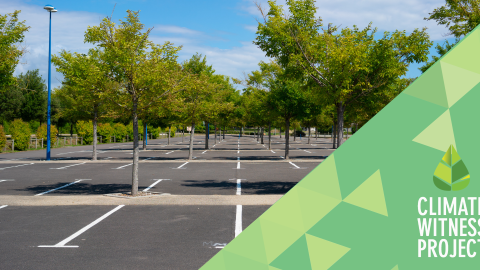Biblical Justice, Ministry in Canada
Creation Care & Church Grounds: Four Ways to be a Faithful Steward
0 comments
378 views

The church building and its associated grounds are the most visible part of the church in the community. How those grounds are maintained reflect the congregation's emphasis on creation stewardship. Here are a few ideas on how to steward church grounds faithfully:
NATIVE TREES: A church built in a new development will often have few trees; planting a variety of native species in carefully selected areas will enhance the property, help to moderate temperatures (especially in the summer), and provide habitat for a variety of wildlife. Native trees are preferred over imported species as they are able to adapt to local conditions, are better able to withstand disease and are better for wildlife.
RAIN GARDENS: Rain-gardens can be installed near drainage areas to absorb water run-off from the driveway and parking areas with the goal of preventing some of the storm water from going into storm sewers. This has the added advantage of replenishing the groundwater — something we often do not think about — while at the same time providing habitat for a variety of wildlife (e.g. butterflies, birds, insects, frogs).
COMMUNITY GARDEN: If the church has a sizable lawn, perhaps some of it could be converted to community garden use. Raised garden beds with good quality soil could be provided by the church and plots given to those interested. A water supply should be available as well as a shed for storing larger tools. Warning – this could look messy as the season progresses, as weeds tend to take over late in the season. But at the same time, this also provides an opportunity for community members to interact with each other and the church members.
PERMEABLE PAVING: Parking lots probably have the most negative impact on creation; they are usually paved with an impervious pavement, which can lead to a lot of water run-off during more frequent downpours caused by a changing climate. Another issue is that large paved areas accumulate a lot of heat in the summer, and are partially responsible for urban “heat islands”. One solution is to use permeable paving. This is paving that allows water to drain through its surface and into the ground. One typical way of doing this is to ensure a good gravel base for the parking area. The surface is then covered with an interlocking plastic grid, which is in turn filled with compacted gravel. This grid supports the weight and holds the gravel in place. Costs are similar to using asphalt, but without the need for drainage. A properly-installed system will outlast asphalt paving.
Blog written by Henry Brouwer. To connect with him and other great regional organizers sign up to be a Climate Witness Project partner.

Global Mission, Biblical Justice
Biblical Justice
Connect to The Network and add your own question, blog, resource, or job.
Add Your Post
Let's Discuss
We love your comments! Thank you for helping us uphold the Community Guidelines to make this an encouraging and respectful community for everyone.